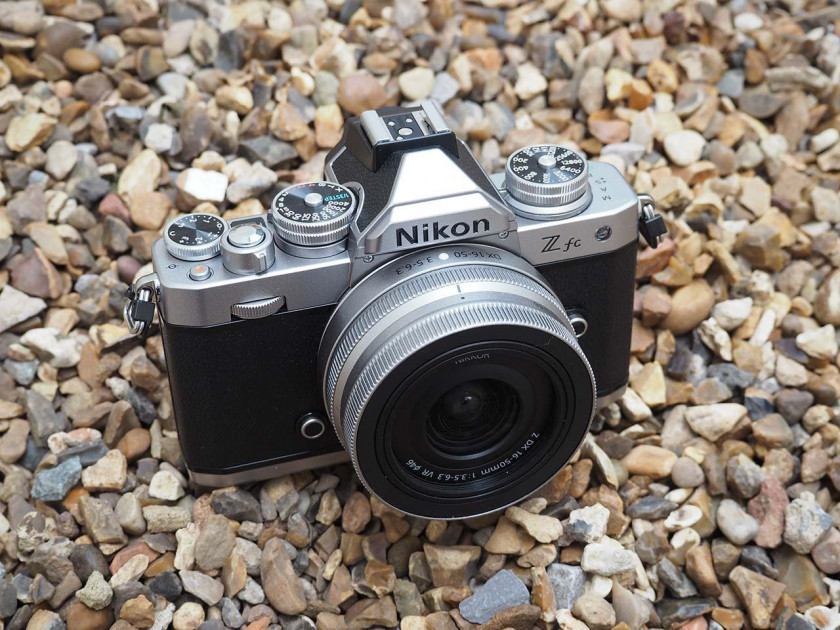Introduction
Announced as part of a duo of two new macro lenses for the Z system, the Nikon Z MC 50mm F2.8 is designed to be a small, light and compact walk around macro lens which can be used with either full-frame or APS-C Nikon Z system cameras.
The duo are the first native macro lenses for the Z mount, with users having to use F-mount DSLR lenses with an adapter if they wanted a macro option previously.
Although designated as a macro lens, with its short focal length and cheaper pricing than the 105mm, the Nikon Z MC 50mm F2.8 is something that can be used by a wide variety of photographers in a number of different situations, not just macro.
As it’s a cheaper option, there are also some sacrifices to be made in comparison to the 105mm, including lack of inbuilt Vibration Reduction (VR), as well as no special ARNEO coatings.
Other specifications of the lens include a construction which features 10 elements in 7 groups, including 1 ED element, 1 aspherical element and a fluorine-coated front lens element. There are 9 diaphragm blades, which is near-circular.
At the time of writing, the Nikon Z MC 50mm F2.8 lens can be picked up for around £650 / $650, which is significantly cheaper than the £999 / $999 asking price for the 105mm lens.
Ease of Use
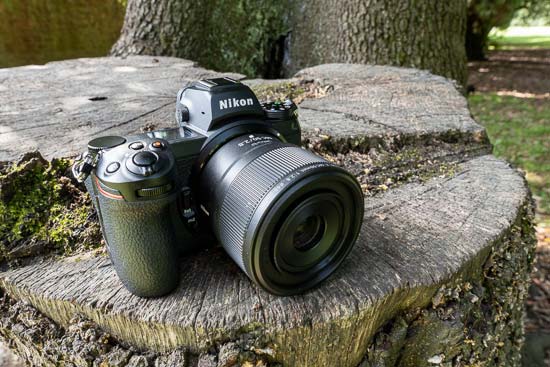
Weighing in at just 260g and being just 66mm in length, the Nikon Z MC 50mm F2.8 is a very small and lightweight lens, especially for a macro optic. It’s ideal for pairing with all of the Z mount cameras, making for an excellent walk around / every day lens, especially with the very versatile 50mm focal length.
It’s likely that this lens is much better suited to the APS-C Z Mount cameras than the heavier and larger 105mm macro lens. We have been using it with the Z7 II, however, where it also works very well.
Although it is small and light, the Z MC 50mm f/2.8 still feels very well constructed, but it has a much simpler outward construction when compared with the 105mm f/2.8 lens.
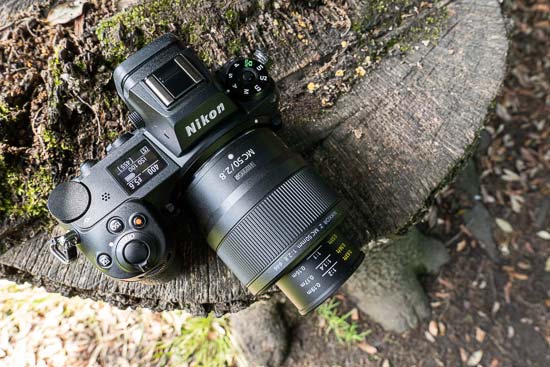
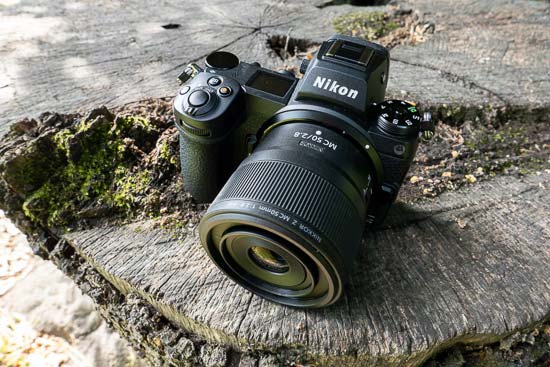
At the mount end of the lens, there is a white dot, which you can use to line up the lens with the camera’s mount. Simply match up the two and twist it into place. You’ll need to use the button on the camera to release the Z MC 50mm F2.8, twisting it in the opposite direction to free it from the coupling. The lens mount is constructed from metal and seems well crafted.
There are just two switches on the lens barrel, with no extra buttons or LCD displays, which is where it is much simpler than the 105mm. The two switches found on the Z MC 50mm f/2.8 are for switching between automatic and manual focus, and a focus limiter switch.
You can either set the latter to “full” or limit it to 0.3-0.16m, which is intended to make focusing quicker when shooting very close-up subjects. Although there is a switch for manual focus, you can override autofocus at any time using the manual focusing ring even when the lens is set to autofocus.
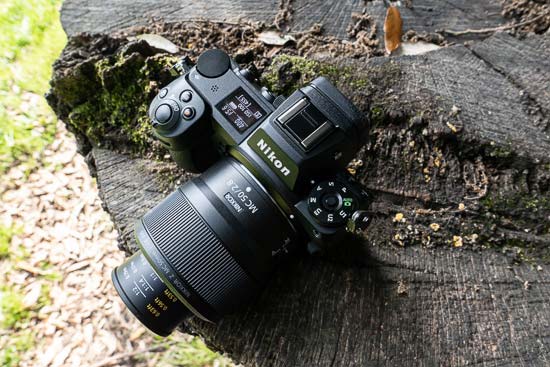
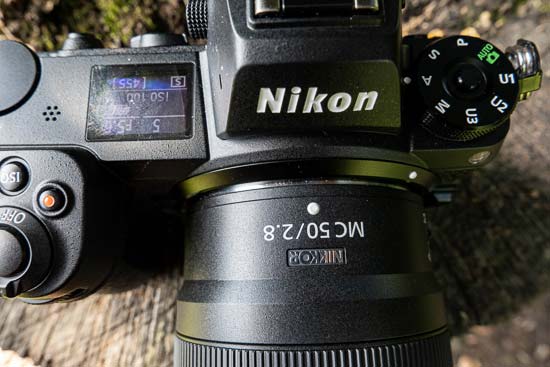
The focusing ring takes up roughly half of the lens barrel. It is ridged to provide a good grip on it, while it is dampened just enough to make precise focusing easy, while also not requiring too much effort.
When focusing on tiny subjects at close distance, it’s very easy to achieve critical focus – if manually focusing, it’s recommended that you switch on focus peaking in the camera to make it even more straightforward. There are no hard stops at either end of the focusing ring, however, so setting focus to infinity isn’t as easy as it could be.
If you don’t want to use the focusing ring to control manual focusing, you can also set it to control other functions such as aperture, ISO and exposure compensation.
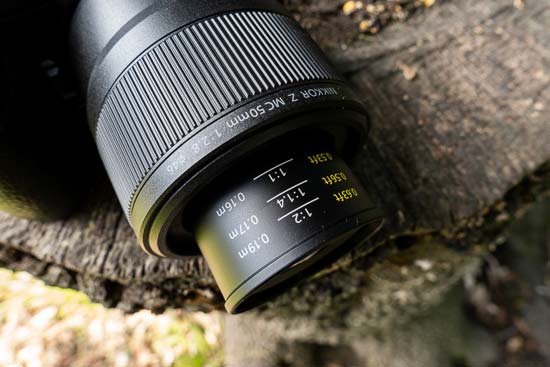
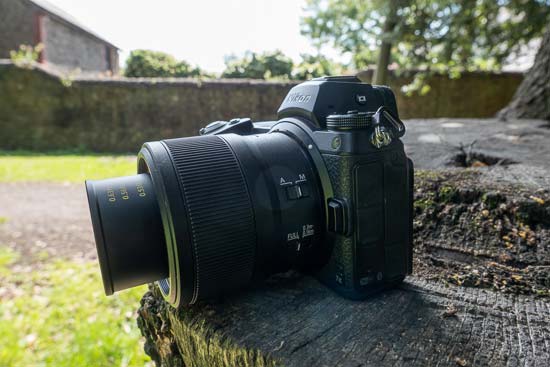
As you rotate the focusing ring, markings on the lens barrel will appear at the front, which clearly indicate whether you’re shooting at 1:.4, 1:2, or 1:1 (life size) magnification ratio – it’s a quick and easy way to determine whether you’re shooting a true life size or not.
This scale is also marked with the closest focusing point, so at 1:1, you’ll need to be shooting subjects at 0.16m.
At the front of the Nikon Z MC 50mm F2.8 lens, you can attach a filters with a 46mm thread size. The front element doesn’t rotate when focusing, which is useful for when working with filters.


Autofocusing is very quick, and also very quiet, making the lens a good option for those who like to shoot video. It’s also useful when photographing insects in close proximity, so as not to startle them. The lens doesn’t spend time hunting for focus, except in very dark situations.
This lens doesn’t come with inbuilt VR, however thanks to its lightweight and small construction, it’s still a good option for handheld low-light shooting.
Supplied in the box is a small lens hood, which clips into place on the front of the lens. There’s also a cloth lens case, which is also useful for cleaning the lens while on the move.
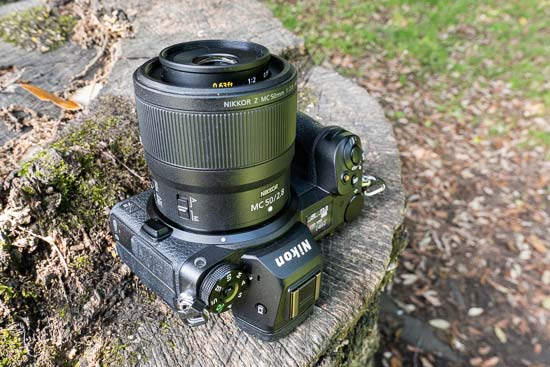
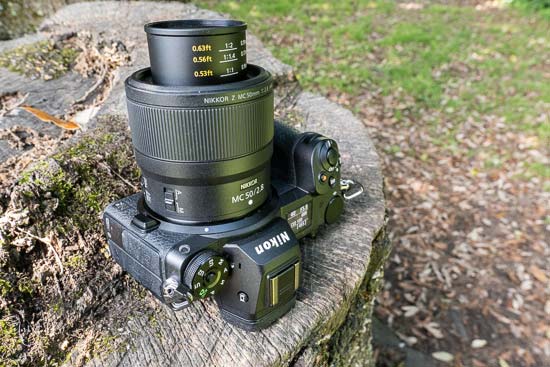

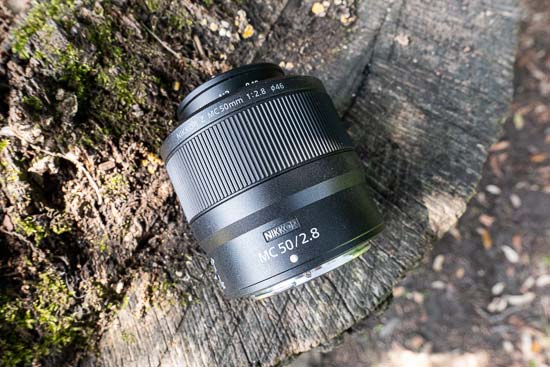
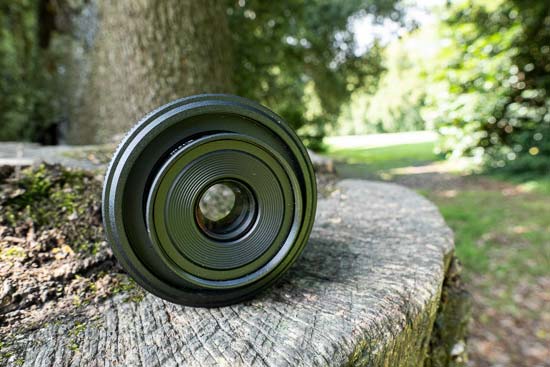
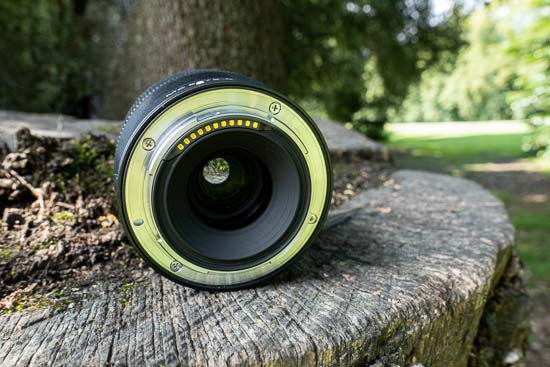
Focal Range
The Nikon Z MC 50mm f/2.8 is designed to be used with either full-frame or APS-C cameras. When used with full-frame cameras, the angle of view is 47 degrees. With APS-C cameras (or full frame cameras used in DX mode), you get an equivalent focal length of 75mm and an angle of view of 31 degrees.

Chromatic Aberrations
Typically seen as blue or purple fringes along high contrast edges, chromatic aberrations tend to be a bigger problem for cheaper or poorly constructed lenses, so we wouldn’t expect to see it occurring here. Indeed, with the Nikon Z MC 50mm f/2.8 it’s hard to spot too many problematic aberrations appearing, especially at normal viewing sizes.
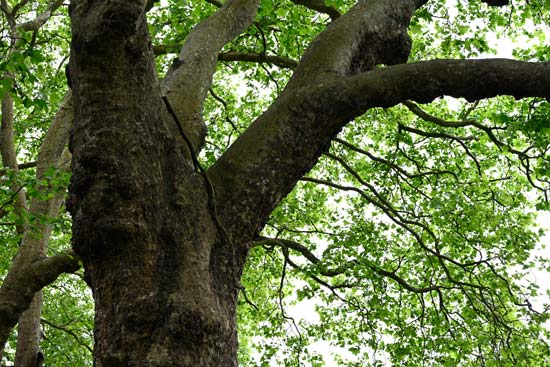
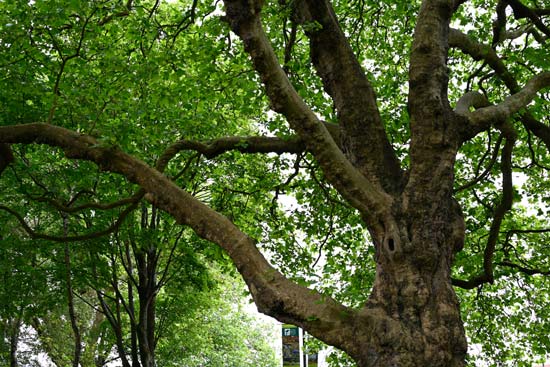
Distortion
At this kind of focal length, we wouldn’t expect to see too much in the way of distortion, indeed there is barely any evident in either the raw or JPEG files.

Light Fall-off
With the lens set to its maximum aperture, there is some light drop off evident when photographing a white wall. In more normal situations, it is harder to spot but you might need to apply some correction to remove vignetting if it bothers you. Alternatively, you can stop down by at least two f/stops to prevent it from happening at all.

Macro
The Nikon Z MC 50mm F2.8 is of course a dedicated macro lens. It has a minimum focusing distance of just 16cm, with a maximum magnification of 1x / 1:1.





Bokeh
The word for out-of-focus areas of a photograph, bokeh is usually described in qualitative terms such as smooth, creamy or pleasing.
With a maximum aperture of f/2.8 and a 9-rounded blade design, our view is that you can get some beautiful examples of bokeh with the Z MC 50mm f/2.8.
However, since opinions about bokeh can be highly subjective, we have included some examples below for you to make your own judgement.


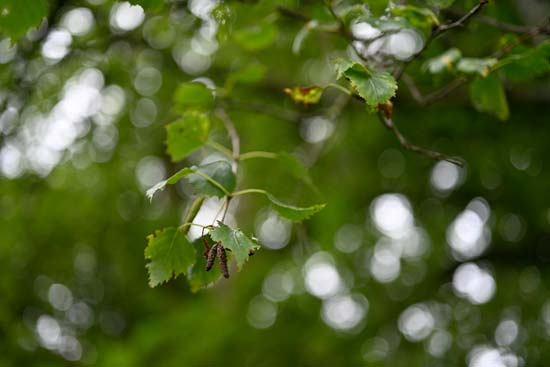

Sharpness
In order to show you how sharp this lens is, we are providing 100% crops on the following page.

